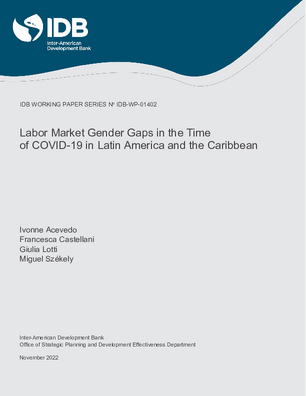Labor Market Gender Gaps in the Time of COVID-19 in Latin America and the Caribbean
Date
Nov 2022
This study shows that the trend of declining gender gaps in labor market indicators in Latin America in previous decades did not change significantly in most countries during the COVID-19 pandemic. However, a closer look at the dynamics during the 2019-2021 period shows that (i) women were harder hit in terms of employment losses during the 2020 economic shock; (ii) despite the labor market recovery, women in 2021 often remained less likely to work than they did in 2019; nevertheless, (iii) in a subset of countries the gender gap in employment rates widened. However, relative to the value of their 2019 wages, the accumulated income losses were considerably greater for women than for men in most cases. This can create scarring effects for the future through greater vulnerability, lower incomes, and reduced probabilities of job insertion. The groups of women hit hardest by the shock were those with less than a tertiary education, those in the 14-24 year-old age group, those living in urban areas, and those working in the tertiary sector.




